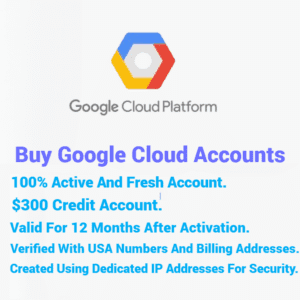Buy G Suite Account
G Suite, now known as Google Workspace, is a comprehensive suite of cloud-based productivity and collaboration tools developed by Google. It includes applications such as Gmail, Google Drive, Google Docs, Google Sheets, Google Meet, and Google Calendar, among others. These tools are designed to enhance communication and streamline workflows within organizations of all sizes.
One of the primary benefits of G Suite is its ability to facilitate real-time collaboration. Multiple users can work on the same document simultaneously, making it easier to share ideas and make changes on the fly. In addition to collaboration, G Suite offers robust security features that are essential for businesses.
With built-in encryption, two-factor authentication, and advanced phishing protection, organizations can safeguard their sensitive data. Furthermore, G Suite provides ample storage options through Google Drive, allowing businesses to store and access files securely from anywhere with an internet connection. The integration of various applications within the suite also means that users can seamlessly transition between tasks without the need for multiple logins or software installations.
Key Takeaways
- G Suite is a collection of cloud computing, productivity, and collaboration tools developed by Google.
- Benefits of G Suite include professional email addresses, online storage, shared calendars, video meetings, and more.
- To purchase a G Suite account, visit the G Suite website, choose a plan, and follow the steps to set up your account.
- When choosing the right G Suite plan for your business, consider the size of your team, your budget, and the specific features you need.
- Setting up your G Suite account involves verifying your domain, creating user accounts, and customizing your settings to fit your business needs.
How to Purchase a G Suite Account
Purchasing a G Suite account is a straightforward process that can be completed online. To begin, prospective users should visit the official Google Workspace website. Here, they will find various plans tailored to different business needs.
After selecting a plan that aligns with their requirements, users can click on the “Get Started” button. This action will prompt them to enter their business information, including the name of the organization and the number of employees who will be using the service. Once the initial information is submitted, users will be guided through the setup process, which includes creating a primary email address and setting up billing information.
Google offers a free trial period for new users, allowing them to explore the features of G Suite before committing to a paid plan. After completing the purchase, users will receive confirmation via email and can begin utilizing the suite’s tools immediately.
Choosing the Right G Suite Plan for Your Business
Selecting the appropriate G Suite plan is crucial for maximizing productivity and ensuring that all business needs are met. Google Workspace offers several plans, including Business Starter, Business Standard, Business Plus, and Enterprise. Each plan varies in terms of storage capacity, video conferencing capabilities, and advanced security features.
For small businesses or startups, the Business Starter plan may suffice, providing essential tools at an affordable price. On the other hand, larger organizations or those with more complex needs may benefit from the Business Plus or Enterprise plans. These options offer enhanced storage limits, advanced administrative controls, and additional security measures such as data loss prevention.
It is essential for businesses to assess their current requirements and future growth potential when choosing a plan to ensure they select one that will accommodate their evolving needs.
Setting Up Your G Suite Account
| Metrics | Value |
|---|---|
| Number of G Suite accounts set up | 100 |
| Number of users added to G Suite account | 80 |
| Number of G Suite features enabled | 15 |
| Number of G Suite training sessions conducted | 5 |
After purchasing a G Suite account, the next step is to set it up effectively. The setup process begins with verifying your domain name, which is necessary for creating custom email addresses (e.g., yourname@yourbusiness.com). This verification typically involves adding a TXT record to your domain’s DNS settings.
Google provides detailed instructions for this process, making it accessible even for those with limited technical expertise. Once the domain is verified, users can proceed to create accounts for their team members. This involves entering each user’s name and desired email address.
Administrators can also set up groups for easier communication among teams or departments. Additionally, configuring security settings such as two-factor authentication is crucial during this phase to protect sensitive information from unauthorized access.
Managing Users and Permissions in G Suite

Effective user management is vital for maintaining security and ensuring that team members have access to the tools they need. G Suite allows administrators to manage user accounts through the Admin Console, where they can add or remove users, reset passwords, and assign roles based on job functions. This centralized management system simplifies the process of overseeing multiple accounts within an organization.
Permissions can also be customized to control access to specific files or applications. For instance, administrators can restrict editing rights on sensitive documents while allowing team members to view them. This level of control ensures that confidential information remains secure while still promoting collaboration among users who require access to shared resources.
Integrating G Suite with Other Business Tools
G Suite’s seamless integration with third-party applications and services is one of its standout features. This capability allows businesses to connect a wide range of tools and services with their Google Workspace applications, resulting in enhanced productivity.
Streamlining Project Management
Many businesses rely on project management software like Trello or Asana to stay organized. By integrating these tools with Google Drive, teams can attach relevant documents directly to tasks or projects, making it easier to access and share information.
Enhancing Customer Relationship Management
G Suite’s integration capabilities also extend to customer relationship management (CRM) systems like Salesforce. By syncing CRM systems with Gmail, businesses can streamline communication with clients and centralize customer information.
Creating a Cohesive Workflow
These integrations not only save time but also create a more cohesive workflow by centralizing information across different platforms. By connecting multiple tools and services, businesses can eliminate data silos and ensure that all teams have access to the information they need to work efficiently.
Tips for Getting the Most Out of Your G Suite Account
To maximize the benefits of a G Suite account, users should take advantage of its extensive features and functionalities. One effective strategy is to utilize Google Drive’s organizational capabilities by creating folders and subfolders for different projects or departments. This practice helps maintain an orderly file structure and makes it easier for team members to locate necessary documents.
Additionally, leveraging Google Meet for virtual meetings can enhance communication among remote teams. Users should familiarize themselves with features such as screen sharing and recording meetings for future reference. Regular training sessions on using G Suite tools effectively can also empower employees to utilize the suite’s full potential, ultimately leading to improved collaboration and productivity within the organization.






Reviews
There are no reviews yet.